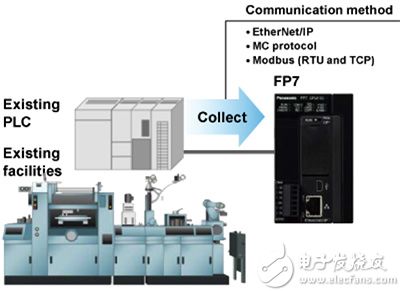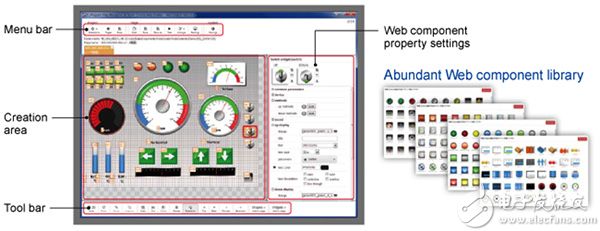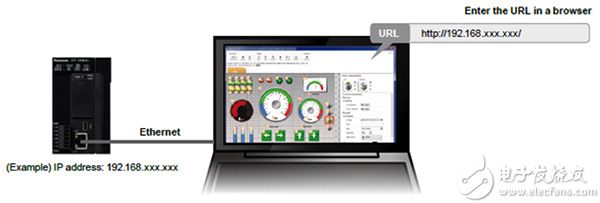The Industrial Internet of Things (IIoT) is a key enabler of smart manufacturing or Industry 4.0 (the fourth industrial revolution), which can effectively integrate automation and big data to increase productivity, reduce waste and energy consumption, and enhance factory flexibility.
Smart manufacturing and IIoT enable companies to increase productivity, extend equipment uptime and improve product quality and other key performance indicators. Companies may want to seize opportunities, but they are not sure about how to carry out changes while avoiding unacceptable destruction or wasting existing equipment investments. The machinery currently in use means a large capital investment, so the owner may be reluctant to perform a large-scale replacement or may involve an upgrade project such as a PLC to reprogram the controller. The PLC program may be very complicated. Even if the relevant knowledge is sufficient to successfully modify the current program, the PLC itself may lack other resources to support additional functions.
Bring intelligence into existing factoriesIn order to solve these problems, some companies have explored various methods to introduce network connection as an additional function into existing equipment. Doing so can help reduce the entry cost of smart manufacturing, especially when the installed equipment may contain a large number of sensors (used for basic process control). Although a wealth of data can be collected, the lack of external connections prevents companies from maximizing their value.
Connect to the machine, connect to the networkThe Panasonic FP7 dual-purpose PLC is designed to allow companies to introduce IoT functions as additional functions into existing automation systems. The controller has the ability to handle any protocol, including Ethernet/IP, Modbus (RTU and TCP), Profibus and other protocols, which allows the controller to collect information from the installed PLC (Figure 1).

Figure 1: A dual-purpose controller can collect information from an existing PLC and achieve remote secure access.
The built-in Web server allows users to view data using browsers on conventional devices such as mobile or desktop PCs. The dashboard can be customized using a PC-based generator tool, components (such as switches, lights, and meters) can be selected and placed by drag-and-drop operations, and settings can be quickly and easily set by selecting properties (Figure 2). FP7 can also support e-mail reminders, which is suitable for sending status updates, event reminders, or special situations that can't be delayed.

Figure 2: Graph generation tools provide support for designing dashboards that clearly display the collected data.
By transferring data from existing controllers to devices such as smartphones or PCs with browsers (Figure 3), FP7 provides easy-to-use low-cost entry-level products to help manufacturers explore the ability of IoT to carry out smart manufacturing practices. The addition of the FP7 graphic generation tool will not cause a major impact. This tool can be connected to a variety of automation controllers (PLC or other Ethernet compatible devices) and can simultaneously display the data of up to 16 controllers. In addition, you can connect to multiple PCs at the same time.

Figure 3: These data can be accessed using any device with a web browser.
The collected data can be safely stored and managed on the device, and the flexible sharing function of the controller code and data registers can maximize the use of available storage space, eliminating the need to purchase more expensive memory. On the other hand, the collected data can also be transferred to other media such as a PC, or transferred to an FTP client or a web server in an external LAN through a secure communication method compatible with Secure Socket Layer (SSL). This enables production line inspection data and many other production line data to be stored on the server and can be checked at any time. In addition, FP7 can also read back data from external devices.
If this method is adopted for IoT connectivity and browser-based process management, companies can use FP7 to transfer the acquired data to cloud-based analysis applications, which can expand their smart manufacturing.
As a modular PLC that can be configured through various digital and analog I/O, FP7 also supports adding sensors to the system to provide more detailed information about the monitored process or equipment. Other modules include positioning devices, high-speed counters, pulse output devices, and remote I/O. This provides a scalable method for smart manufacturing, allowing users to experience IoT capabilities with minimal risk before developing a long-term strategy that suits them.
to sum upFrom the perspective of improving manufacturing productivity and performance, the advantages of smart manufacturing are obvious. However, smart manufacturing also faces difficult challenges, including implementing smart manufacturing while ensuring cost-effectiveness, developing scalable strategies, and coping with the technical limitations of traditional equipment. Various studies (such as IIC's connection test platform) have confirmed that what existing factories need is the ability to add smart manufacturing with minimal changes to traditional equipment. Dual-purpose PLCs such as Panasonic FP7 provide practical solutions for this, which can make full use of existing data obtained from unconnected automation equipment.
Fill Light,Ring Light,Led Ring Light,Selfie Ring Light
Shaoxing Shangyu Kenuo Photographic Equipment Factory , https://www.kernelphoto.com